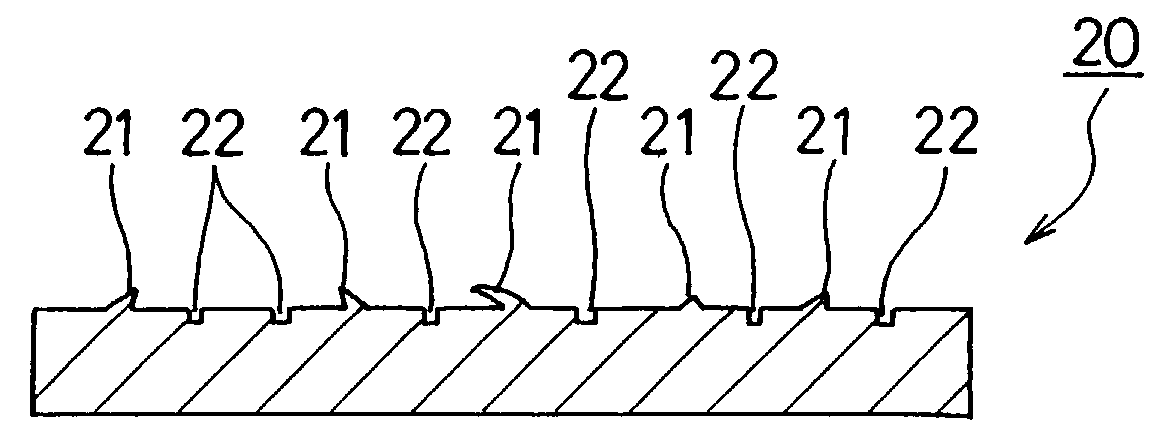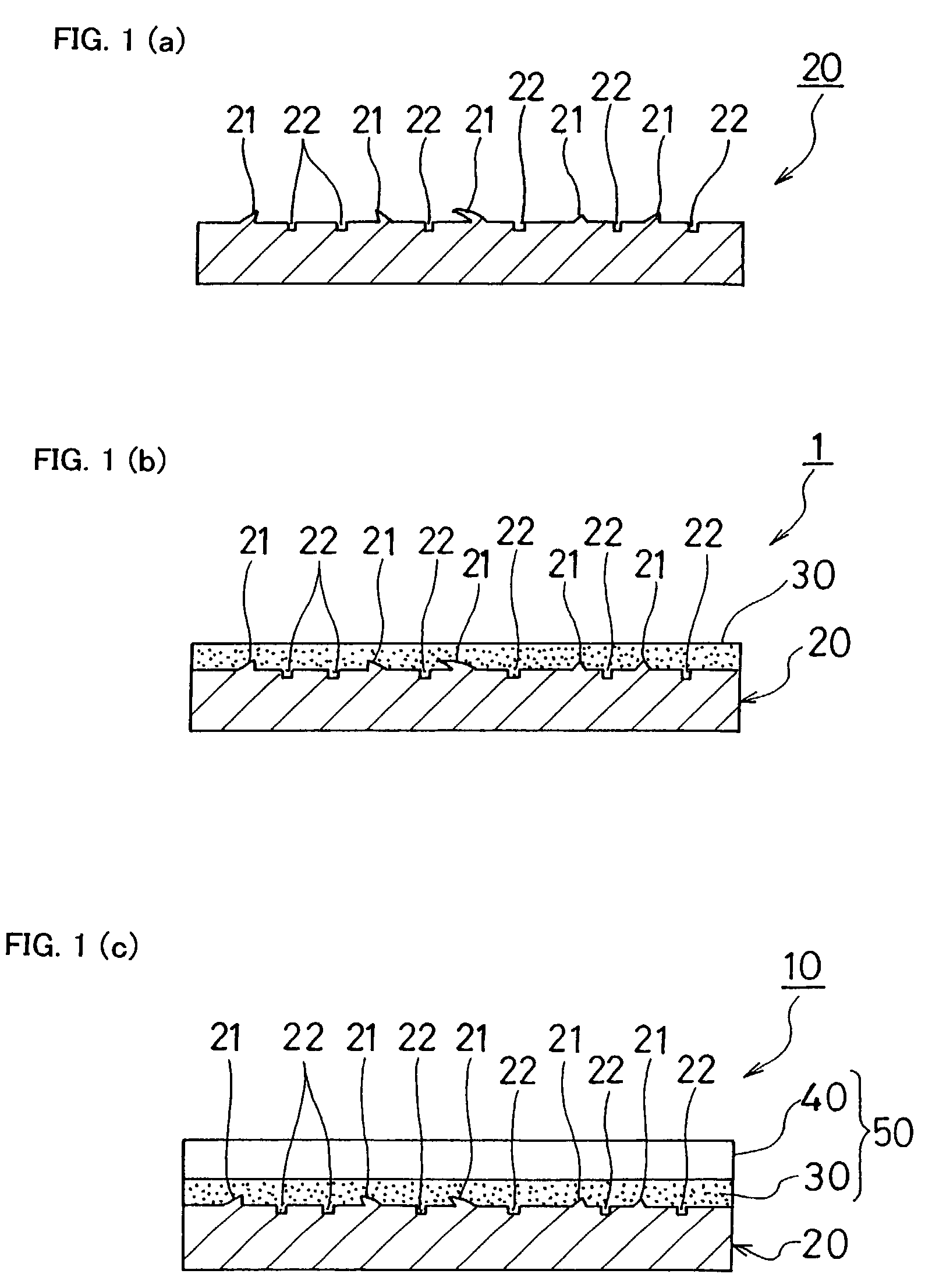Surface treatment method of metal member, and metal goods
a surface treatment method and metal technology, applied in the direction of solid-state diffusion coating, coating, chemical apparatus and processes, etc., can solve the problems of easy contact with remaining water, difficult to clean deep concave of molded product having complicated shape, and many metals are susceptible to corrosion at high temperature and humidity, so as to improve the corrosion resistance of the surface treatment coating, improve the adhesion of the paint film, and improve the effect of dimensional accuracy
- Summary
- Abstract
- Description
- Claims
- Application Information
AI Technical Summary
Benefits of technology
Problems solved by technology
Method used
Image
Examples
examples 1-66
[0059]In these examples, the surface treatment liquids were prepared by dissolving in water a proper quantity of manganese compound, such as manganese dihydrogen phosphate or manganous sulfate, and a chelating agent, such as hydroxyethilidene disodium diphosphonate, and, if necessary, silicate, such as sodium metasilicate or sodium orthosilicate, and / or molybdenum compound, such as sodium molybdate, so that their pH vales can be each adjusted to 9 or more. The conditions of heating under pressure, concentration of the treatment agents, pH of the treatment liquids, and their properties (evaluation results) are shown in TABLES 3 to 11. It is to be noted that when all the paints mentioned above were evaluated on adhesion of the paint, no substantial difference was found in the evaluation results. The same thing applies to the comparative examples mentioned later.
[0060]
TABLE 3Examples 1-812345678Condition of heatingand pressingtemperature / pressure / time40 / 0 / 12090 / 0 / 6040 / 0.5 / 60150 / 4.5 / 302...
examples 67-132
[0095]In these examples, the same surface treatment liquids as those in the Examples using the magnesium alloys were used for the surface treatment of the aluminum alloy specimens. The conditions of heating under pressure, concentration of the treatment agents, pH of the treatment liquids, and their properties (evaluation results) are shown in TABLES 26 to 34. It is to be noted that when all the paints mentioned above were evaluated on adhesion of the paint, no substantial difference was found in the evaluation results. The same thing applies to the comparative examples mentioned later.
[0096]
TABLE 26Examples 67-746768697071727374Condition of heatingand pressingtemperature / pressure / time40 / 0 / 12090 / 0 / 6040 / 0.5 / 60150 / 4.5 / 30200 / 12 / 540 / 0 / 12090 / 0 / 6040 / 0.5 / 60(° C. / kgf / cm2 / min)Concentration of surfacetreatment agent (%)Water9292929292878787Manganese dihydrogen33333555phosphateTetrasodium55555888ethylenediaminetetraacetateSodium metasilicate————————pH of surface treatment solution (20° C.)10.0...
examples 141-192
[0130]In these examples, the same surface treatment liquids as those in the Examples using the magnesium alloys were used for the surface treatment of the zinc alloy specimens. The conditions of heating under pressure, concentration of the treatment agents, pH of the treatment liquids, and their properties (evaluation results) are shown in TABLES 49 to 56.
[0131]
TABLE 49Examples 133-140133134135136137138139140Condition of heatingand pressingtemperature / pressure / time40 / 0 / 12090 / 0 / 6040 / 0.5 / 60150 / 4.5 / 30200 / 12 / 540 / 0 / 12090 / 0 / 6040 / 0.5 / 60(° C. / kgf / cm2 / min)Concentration of surfacetreatment agent (%)Water9292929292878787Manganese dihydrogen phosphate33333555Tetrasodium ethylenediamine55555888tetraacetateSodium metasilicate————————Sodium molybdate————————pH of surface treatment solution (20° C.)10.010.010.010.010.010.510.5105PropertiesSalt spray testAC41AΔΔΔΔΔΔΔΔ(test base-material)AG40AΔΔΔΔΔΔΔΔHigh-temperature andAC41A◯◯◯◯◯◯◯◯high-humidity testAG40A◯◯◯◯◯◯◯◯(test base-material)
[0132]
TABLE 50Exa...
PUM
| Property | Measurement | Unit |
|---|---|---|
| pH | aaaaa | aaaaa |
| pressure | aaaaa | aaaaa |
| temperature | aaaaa | aaaaa |
Abstract
Description
Claims
Application Information
 Login to View More
Login to View More - R&D
- Intellectual Property
- Life Sciences
- Materials
- Tech Scout
- Unparalleled Data Quality
- Higher Quality Content
- 60% Fewer Hallucinations
Browse by: Latest US Patents, China's latest patents, Technical Efficacy Thesaurus, Application Domain, Technology Topic, Popular Technical Reports.
© 2025 PatSnap. All rights reserved.Legal|Privacy policy|Modern Slavery Act Transparency Statement|Sitemap|About US| Contact US: help@patsnap.com


